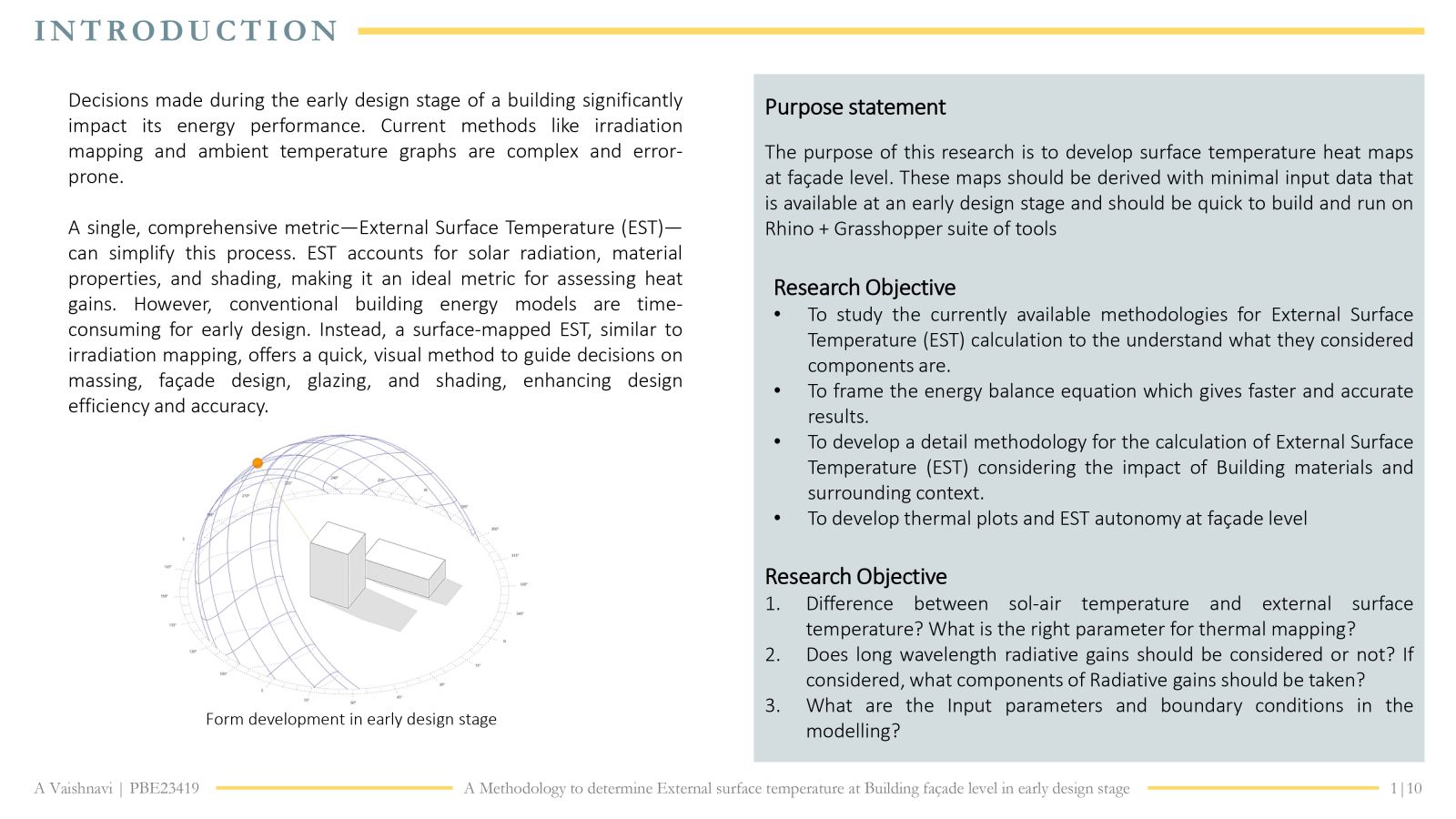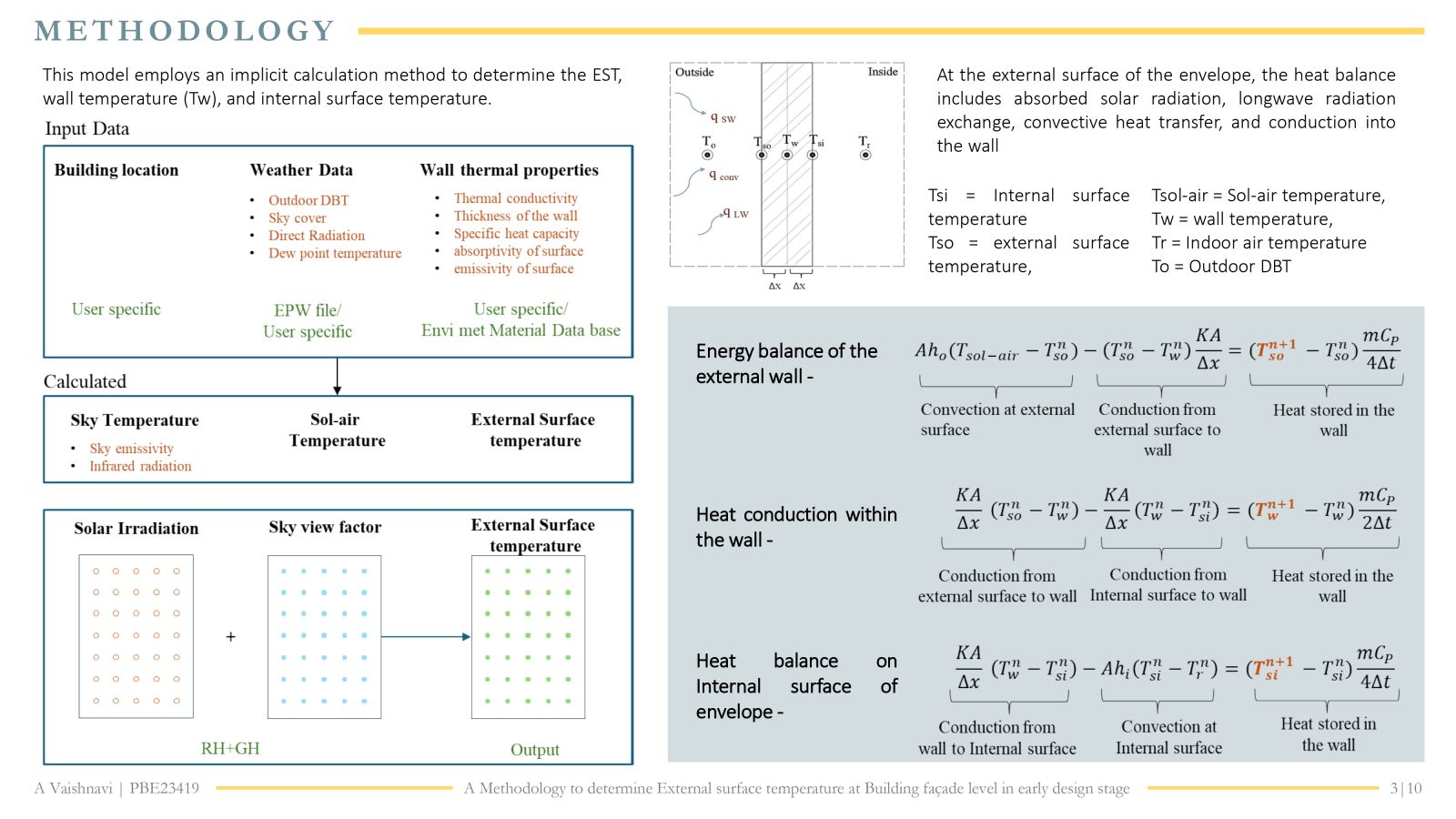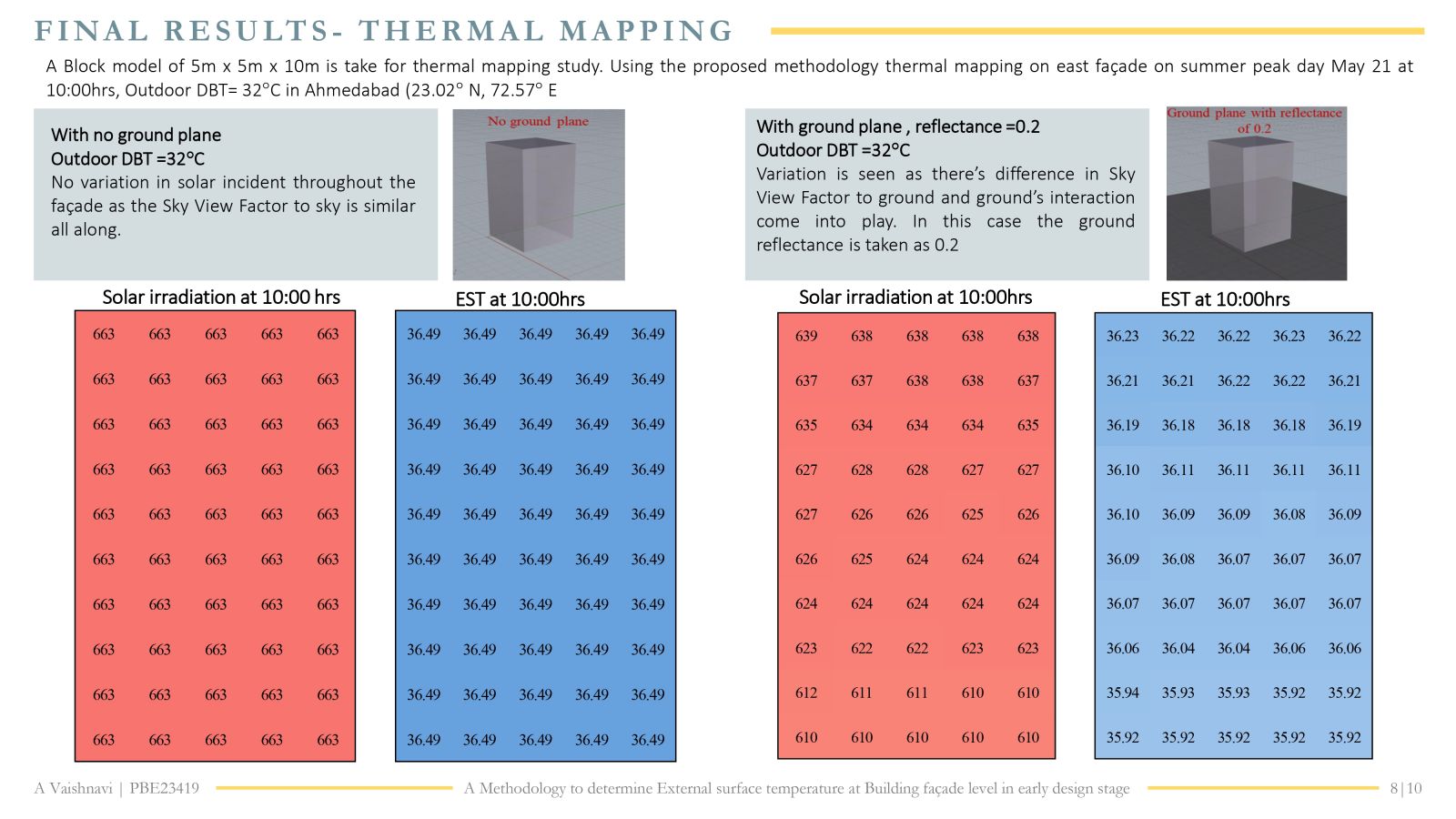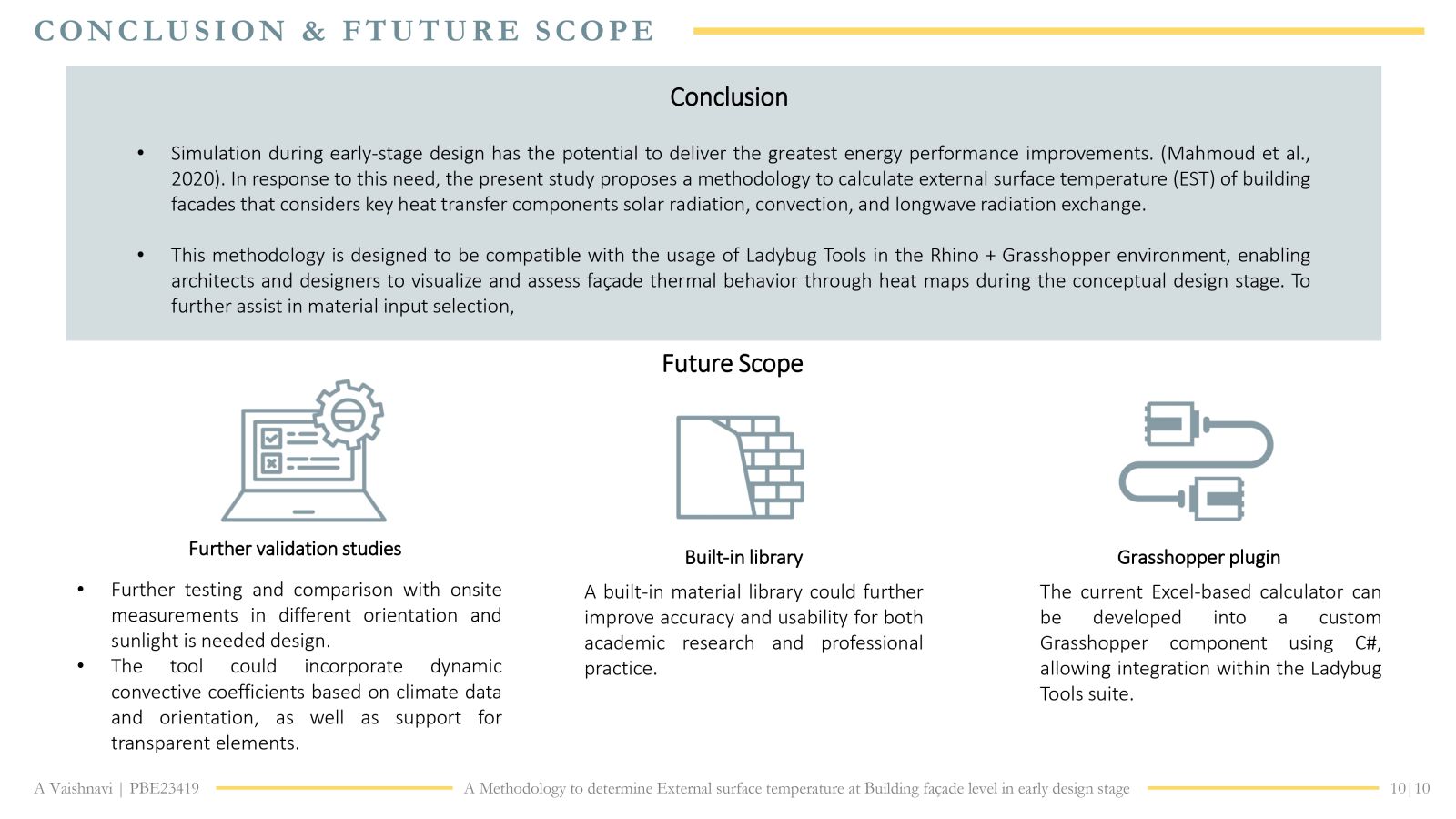Your browser is out-of-date!
For a richer surfing experience on our website, please update your browser. Update my browser now!
For a richer surfing experience on our website, please update your browser. Update my browser now!
A Methodology to Determine External Surface Temperature:While solar irradiation is often assessed during the early stages of building design, advancing one step further by mapping the External Surface Temperature (EST) offers greater flexibility for evaluating shading, orientation and material choices. This study presents a methodology for estimating EST, aimed at assisting architects during the conceptual design phase. The methodology incorporates components of heat transfer- incident solar radiation, convective heat exchange, and longwave radiation from the sky and surroundings and calculated using a time-stepped, implicit numerical approach. To support design accessibility, the model can be integrated into Ladybug Tools with Rhino + Grasshopper, enabling heat maps directly on 3D massing models. An Excel-based calculator was developed to estimate EST, with input values of incident solar radiation imported from Ladybug Tools in Rhino + Grasshopper. The output data is then visualized as thermal heat maps on the building facade. A simplified block model 5m × 5m × 10m was used to test the workflow. Additionally, incident solar radiation values obtained from Radiance (via Ladybug) and EnergyPlus displayed closely matching trends. The calculated results were compared with DesignBuilder simulations and validated using measured data of the FM building at CEPT University. A parametric analysis was performed to assess the effect of key parameters such as thermal conductivity, surface absorptivity, specific heat capacity, and sky emissivity on EST, ensuring the robustness of the methodology. Further, thermal mapping was done on facades with varying orientations, and a second study with three scenarios: no ground plane, a ground plane with 0.2 reflectance, and a ground plane with surrounding buildings. To support easy iteration, a quick-reference material database based on CARBSE values was developed for use with the Excel tool. The proposed workflow bridges design intuition and thermal performance, offering a user-friendly simulation approach during early design stage.









